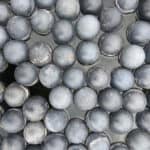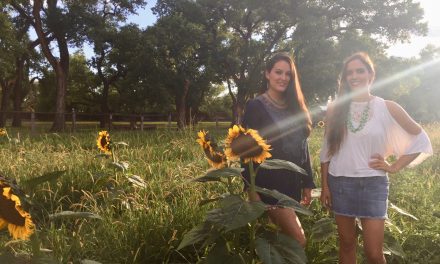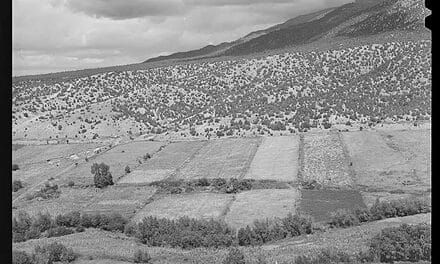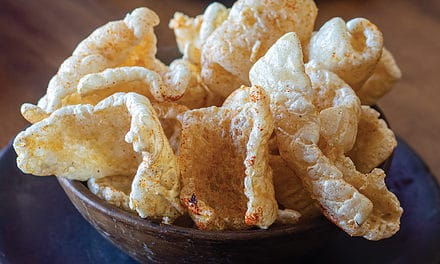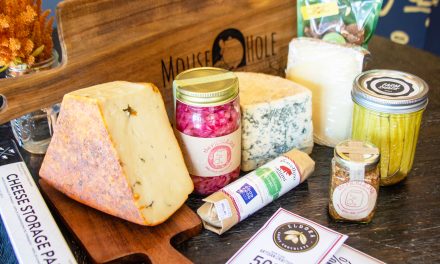Words and Photos by Christie Green

Gallinaceous birds’ crops, also known as craws, filled with seeds.
Canola. Soybeans. Corn. Flax. Buffalo berry. Pea shrub. Kochia. Russian thistle. Barley. Oats. Bearberry. Acorns. I pull the translucent, gummy skin of the crop, also known as a craw, from the turkey’s chest. This pouch extends from the esophagus of gallinaceous birds and is part of the mechanical digestion process. I tug the crop from the tubes and muscles that embed them within the slender throats of this and other upland birds I hunt. I twist the skin to seal the little pouches and set them to dry on the piano. The crops rest, like plump, translucent orbs, with the seeds inside pushing against the thin skein as it dries like a veiny shrink wrap around them.
The seeds within the bodies of these birds tell a story of time and place, of connection among plant, animal, and human, between domestic agriculture and wildlife habitat. Birds like pheasant, grouse, partridge, quail, and turkey sip from cool acequias and peck insects while cruising the fields. They meander between rows of cultivated food, in dense shelter belts that protect against wind and soil erosion, and traverse property boundaries, ducking under barbed wire and flying over barns. A flock of twenty-three turkeys moves like methodical grazers from a cottonwood bosque through an alfalfa field in Springer, late winter snow melting into their iridescent wings and fringed tails. The landowner tells me they’re there all the time. She can’t believe anyone would find it hard to hunt them. “They’re everywhere!”
One farmer whose ranch I hunted on years ago told me, “I pull those craws from the birds I hunt and open them up. I don’t just throw them away. I cast the seed from them back out onto the land to sow the next generation. May as well keep the seed stock local, keep propagating what comes from right here.”

The armature and architecture of each individual seed tells the story of family, place, geographic preference, and propagation method. Winged seeds take flight on air, prickly and sticky seeds hitch rides on animal fur and on fabric, such as socks and shoelaces. Palatable seeds, cloaked in juicy pulp, pass through a bird’s digestive tract and become scarified (or opened) to germinate. Some seed, like Stipa neomexicana, a cool-season native grass, lets go from the stem as it ripens, falls to the ground, and corkscrews itself into the soil like a self-propelled drill.
Each day, approximately six thousand acres of open space in the United States are converted into other uses, to the detriment of forests, grasslands, waterways, and wildlife. Revegetation in these disturbed areas around new construction is critical for regenerating denuded soil, fragmented habitat, and diminished species diversity. Although bulk quantities of seed may be sourced from afar, even internationally, restoration ecologists, farmers, land stewards, and government agencies are discovering that local seed stock proves more successful. The genius of the seed, and its ability to propagate, germinate, and become established, is embedded within its body’s “DNA,” which directly relates to location.
Seed from a place becomes of that place. The wisdom of how to adapt to conditions such as alkaline soil, saline water, and extreme heat, drought, and cold is literally inherent.

I learned from Maria Mullins, assistant Southwest director at the Institute for Applied Ecology (IAE), that prioritizing and investing in local sources of native plant seed stock is an increasingly important complement to the soil and water conservation essential to habitat restoration projects. Such IAE projects include removal of invasive plants like Russian olive trees that compete with native species in wetlands. Restoration practitioners and land managers are discovering a dearth of locally sourced native plant species suited to local climate, soil, and growing conditions. Seeds that are sourced and grown in different regions may have lower success germinating and establishing in the arid Southwest compared to ecotypic plants that are collected and grown closer to home.
In response to the need for locally grown, genetically resilient grass, perennial, and annual wildflower and shrub species, IAE coordinates the Southwest Seed Partnership to increase the supply of native seeds for habitat restoration and conservation. IAE coordinates wild seed collection and then contracts with local farmers to grow out those native seeds in agricultural settings, often taking advantage of marginal croplands. The farmers are paid to grow the plants for one to three years and harvest the seed, with the seed harvests returning to partnership stakeholders, like the Bureau of Land Management (BLM), US Forest Service, and National Park Service, for use in restoration or applied research projects. This locally sourced native seed should be more resilient at establishing even under harsh climatic conditions and the warming climate, requiring fewer inputs from farmers and increasing restoration success.
“We’ve partnered with local farmers at Rio Grande Return, Mandy’s Farm, and other farms to grow out seed stock. It’s beneficial for them because these types of crops are perennials with deep roots. Once established by the third or fourth year, they require few inputs and little water, and actually serve the farm in terms of attracting pollinators and beneficial insects, providing erosion control services with deep roots and diversifying revenue streams,” Mullins explains.
When I ask Mullins about what species are in most demand by partner organizations, she says, “Forbs like Mexican hat, yarrow, and milkweed are in demand but grasses are the easiest to grow out. We’re experimenting with different plants, including ‘workhorse’ species like sand dropseed that are good in disturbed areas and grow everywhere.”


Mark Peabody in a field near Friona, Texas, where a farmer had grown out sideoats grama (Bouteloua curtipendula). While visiting this farmer’s fields of sideoats, blue grama (B. gracilis), and buffalo grass (B. dactyloides), he shared the importance of starting small before launching into larger-scope production. “The farmers are diversifying their existing ‘known’ crops such as corn and sorghum and testing out these new, perennial, lower-water-use plants. They need to see how it works in their operations.”
IAE also maintains a collection of seed in short- and long-term seed banks.
“Local plants need local things—like insects, pollinators, birds, snakes, mammals—to be in the local cycle of life,” says Gail Haggard, proprietor of Plants of the Southwest (PSW) since 1976. “Each needs the other.” In other words, each plant is one of many relations within an ecosystem.
New Mexico State University (NMSU), in collaboration with the US Natural Resource Conservation (NRCS) New Mexico Plant Materials Center in Los Lunas, has been testing upward of two hundred mostly native plant species to learn how they grow, adapt, and attract pollinators. There are over four thousand species of native bees in the United States, and more than 75 percent of US-grown fruits and vegetables are pollinated by native bees and honey bees. Some species of most of the six families of native bees are found in New Mexico. Native bees, along with other pollinators including moths and butterflies, are particularly adapted to and critical to the survival of native plant species. Native vegetation makes up 90 percent of New Mexico’s nearly seventy-eight million acres.
These vast networks of native vegetation and pollinators depend on robust and resilient plant and seed stock to counterbalance and offset the impacts of disturbance and development. Haggard has been collecting seed in the Southwest for at least four decades and supplies approximately 50 percent of the PSW stock of native plants (except grasses) from locally harvested seed. “I’m not a purist,” she tells me. “I mean, seed travels the globe at similar latitudes, so it’s going to get into that pool.” Nonetheless, Haggard emphasizes the importance of native, local seed as the foundation of local ecosystems.
One of the biggest challenges now is from the devastation of wildfires, Haggard says. “I should have much more of a bank of certain species, but I just don’t and now, after the fires, well . . .”
Mark Peabody, manager of Curtis & Curtis Seed in Clovis, echoes Haggard’s and Mullins’s experience with and belief in native stock. “We’ve sourced seed from local plant materials centers like the USDA/NRCS . . . and we’ve been growing native grasses for decades,” Peabody tells me.
Clients of Curtis & Curtis include landscape contractors, the Bureau of Indian Affairs, the US Department of Transportation, the BLM, and the US Forest Service. Farmers contract with the company to grow out annual and cover crop seed like barley, triticale, and small grain crops, as well as native grasses and forbs.
“It requires a lot of inputs in terms of water, equipment, and infrastructure to begin and get established, so it may be overwhelming for new farmers, but it’s possible. We have developed relationships with local farmers we’ve worked with for years, and we also have a few hundred acres of our own near Clovis and in Texas.”
Peabody emphasizes the importance of spreading the risk by growing crops among various locations to minimize damage from wind and hail. “It’s also risky for farmers because there’s no federal insurance for native seed crops. But when you have a good year, it’s definitely possible to get native seed crops established profitably over time.”
When I ask Peabody about effective methods for successful sowing and establishment of native grass seed, he describes a sort of successive partnership between annuals and perennials: “It works wells to have an annual cover like rye, wheat, barley, or triticale, to utilize that and then terminate it [allow it to germinate and grow, then cut it], making sure to have six to ten inches of stubble cover, then drill-seed the grass seed right in, which keeps it from washing and blowing away. It’s a good way to get native grass established.”

Another project exemplary of the importance of native plants and seed that IAE helped steward, along with multiple other partners, is the Pecos Sunflower Project.
The Pecos sunflower, Helianthus paradoxus, which thrives in alkaline, wetland soil, is a federally threatened and New Mexico endangered species. With annual bloom from August to November, the sunflower reaches one to three meters tall and branches at the top, with three to five flower heads per branch that are five to seven centimeters in diameter. The flowers have bright yellow petals and a deep purple-brown center slightly smaller than in common sunflower species.
As an annual, the plant depends on replenishing its own seed stock each year and can grow in groups of a few dozen to thousands of flowers. Pecos sunflower habitat is increasingly at risk as wetlands diminish and dry due to prolonged drought, aquifer depletion, and competition from non-native species like Russian olive and salt cedar.
“The Pecos sunflower is a keystone species,” says Olivia Carril, co-author of Bees in Your Backyard: A Guide to North America’s Bees. “If you remove them from the ecosystem, everything changes; all other species have to shuffle.” She goes on to explain that, since the Pecos sunflower is listed as a rare plant species, it has yet to be studied in-depth, so pollinator species exclusive to it have not been identified. However, these sunflowers are critical because they attract both generalist bees and bees that only specialize on sunflowers, such as the sunflower chimney bee and long-horned bee.
Rather than view the Pecos sunflower as a plant-versus-human problem, the community of Santa Rosa, the Quivira Coalition, New Mexico State Forestry, and New Mexico Energy, Minerals and Natural Resource Division, along with the IAE, worked creatively and collaboratively on multiple projects. The Pecos sunflower became the catalyst for the educational curriculum—highlighting the value and beauty of rare plants and wetland habitats, cienega (wetland) and wildlife habitat regeneration, local economic stimulation, and cultural heritage celebration.
The 116-acre Blue Hole Cienega Nature Preserve near Santa Rosa was identified as a core conservation area to direct recovery efforts including rehabilitating eroded areas and removing invasive plant species. Within four years of restoration work, the number of rare Pecos sunflowers increased nearly fivefold.
Estela Thompson, a middle school science teacher who has taught for twenty-one years with the Santa Rosa Consolidated Schools, had the opportunity to work with botanists, hydrologists, and conservationists and utilize the Pecos sunflower as a hands-on teaching tool. Located within a six-mile sinkhole, Santa Rosa’s unique cienega setting provides its own special sort of classroom.
“When the students go out there, they can identify plants and insects by name and know their role in the environment, what’s seasonal, and what conditions affect their distribution and density. Another piece that’s exciting is that I’ve had former students go into conservation—botany and environmental science,” Thompson says, beaming.
Fueled by Thompson’s enthusiasm and leadership, the City of Santa Rosa embraced the sunflower by hosting the first annual Pecos Sunflower Festival in 2021, garnering affection for the flower and its vulnerable wetland habitat while also stimulating educational opportunities and economic activity for the city.
In July 2022, the first-ever BioBlitz was held at Blue Hole Cienega, featuring birding workshops, field research, plant and animal species monitoring activities, and field sample collecting. Botanists, herpetologists, ornithologists, and other scientists came in for the weekend and surveyed the entire cienega to get a sense of what species are endemic. Other rare species endemic to wet, alkaline soil include Wright’s marsh thistle (Cirsium wrightii) and Great Plains Ladies’ Tresses (Spiranthes magnicamporum). The Pecos sunflower, with its late summer and early fall bloom, is particularly important because it attracts pollinators when other plants aren’t in bloom. Thompson emphasizes the significance of this event and how it is a unique attraction for a diverse group of skilled scientists: “There are day and night collections. This level of scientists in the field in our community is phenomenal!”
The BioBlitz also hosted a youth camp in partnership with the Asombro Institute (asombro is Spanish for “wonder”), a Las Cruces–based nonprofit “dedicated to increasing natural science literacy through engaging, place-based education.”
Saving Beauty, a film by Christina Selby and Arturo Anzures, features local stewardship voices and provocative imagery that tell the story of the plant and its unique cienega habitat to educate and inspire further conservation efforts. The film screened at the BioBlitz and will again be shown at the second Pecos Sunflower Festival, September 9–11.

Left: Blue Hole Cienega Nature Preserve near Santa Rosa. Right: Pecos sunflower (Helianthus paradoxus).
Edge zones, where ecological communities like meadows and forests and streams and grasslands intersect, are species-rich and dynamic. This includes the intersection of developed and untamed edges, such as roadsides where surface water runs off pavement to adjacent shrub, grass, and wildflower plants like scarlet globe mallow (Sphaeralcea coccinea) and annual sunflowers. Sites where agricultural land converges with the uncultivated are equally vibrant. Corn, beans, squash, and chiles, growing near riparian corridors and irrigated by the river water that also hydrates native cottonwood species, provide forage and habitat for overlapping bird, insect, mammal, and reptile species. Just one example is the barn owl, perched in cottonwood cover, which preys on the pocket gopher from the field. At the edge, where diverse plant and animal species meet, life thrives.
As land is developed into agricultural production, residential neighborhoods, and commercial sites, different sorts of edges are created. Borrow ditches, alleys, sidewalk promenades, sports fields, and multiuse trails become areas of human and nonhuman circulation, water conveyance, and plant production. Wild and domestic collide and connect in dynamic adaptation.
As we humans traverse rural and urban boundaries, species “blending” will continue. Such development and disturbance require creative regeneration techniques and partnerships. Landowners, conservationists, and government agencies are embracing collaborative stewardship grounded in the genius loci, or spirit and wisdom of a place. Investing in these local seeds, along with their growers, collectors, and distributors, fosters long-term ecological, economic, and cultural resilience.

A few weeks later, the turkeys’ crops, lined up like science class samples atop the piano, rattle as I pick them up and shake the seeds inside. The globe of skin has dried; the seeds pucker within their shell-like skeins, now loose. I slip a few into my vest pocket as I head out for a walk west of Santa Fe where the Rio Grande cuts a canyon, golf courses scream green, cattle graze, and recreationists walk, ride, and camp.
My boots cut tracks across those of coyote, deer, elk, and cougar. A roadrunner skitters past, a red-tailed hawk lands on the power line above. I roll a scaled quail crop between my forefinger and thumb, and let another one rest, light, in my palm. I feel the texture of miniature grains of grass, papery shrub seedheads, dried insects, and shriveled pods of dried berries. During the walk, I slow to scratch a crop or two into the soil beneath the shelter of fallen piñon, one at the confluence of two arroyos and a few under the lips of a lichen-covered stone. I release the seed from its miniature spherical packaging, trusting the depth of intelligence at hand.

Christie Green
Christie Green is a mother, hunter, and writer, and the principal landscape architect at radicle. Raised in Alaska and on her grandfather’s farm in West Texas, she now resides in Santa Fe. With food and water as catalysts, Green seeks to pique sensual connection and uncomfortable curiosity.



